Pork Adobo is made with succulent pork belly braised in vinegar, soy sauce, garlic, and onions. A delicious balance of salty and savory, this hearty stew is the Philippines' national dish for a good reason!
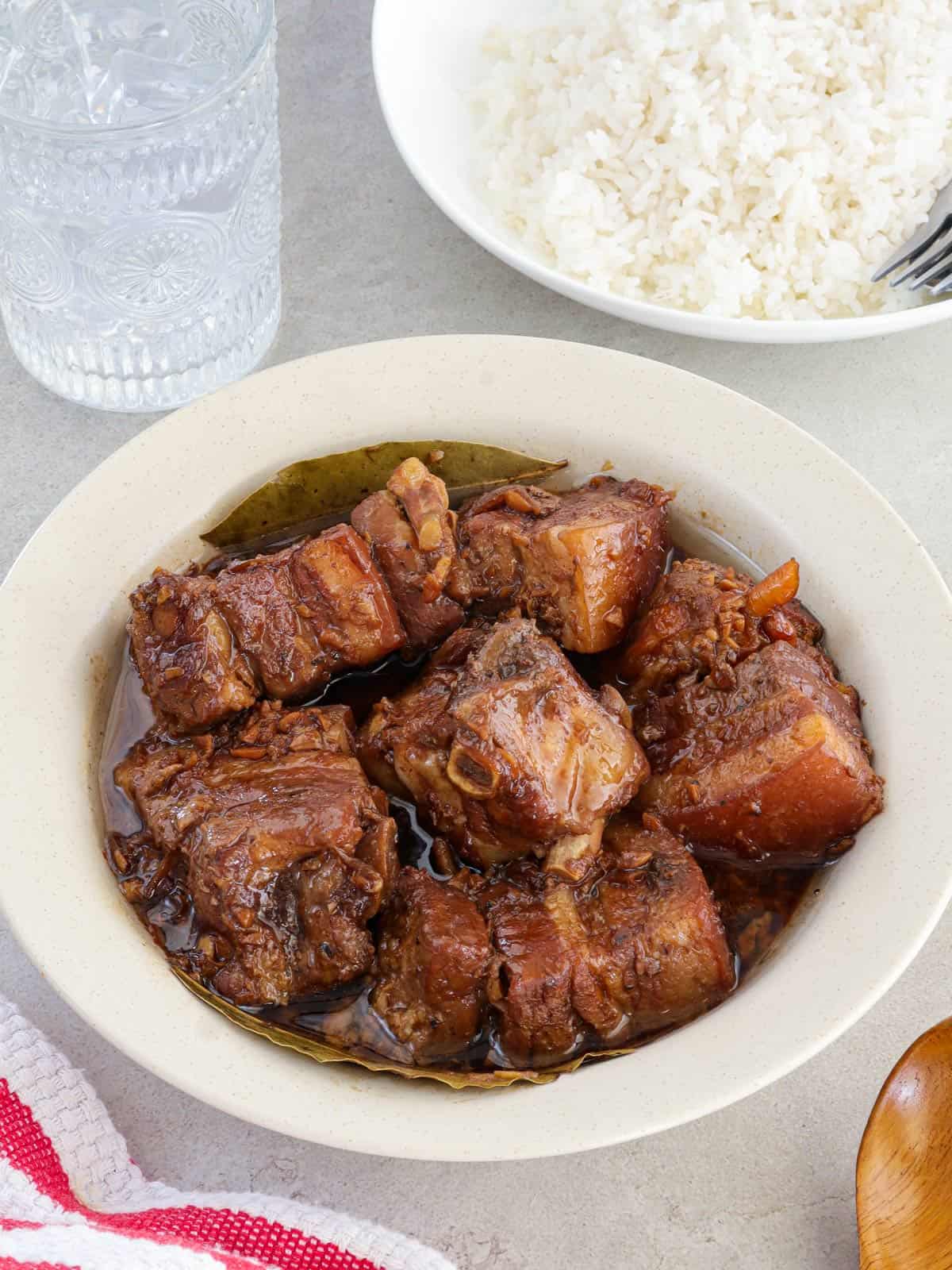
The Filipino adobo is a cooking process or technique in which meat, seafood, or indigenous vegetables are braised in a mixture of vinegar and aromatics such as garlic, onions, peppercorns, and bay leaves.
The many ways adobo is prepared are as diverse as the islands and dialects in the Philippines. Adobong pula with atsuete, Adobo sa gata, and Pineapple Pork Adobo are just a few versions of this classic Filipino national dish.
Some like the hearty stew with more sauce, while others prefer it simmered dry. Others like it slightly tangy, while some prefer it on the sweet side. This recipe is how I like mine, with beautifully seared pork and a rich and thick sauce to spoon over mounds of rice.
More adobo recipes to try
Ingredient notes
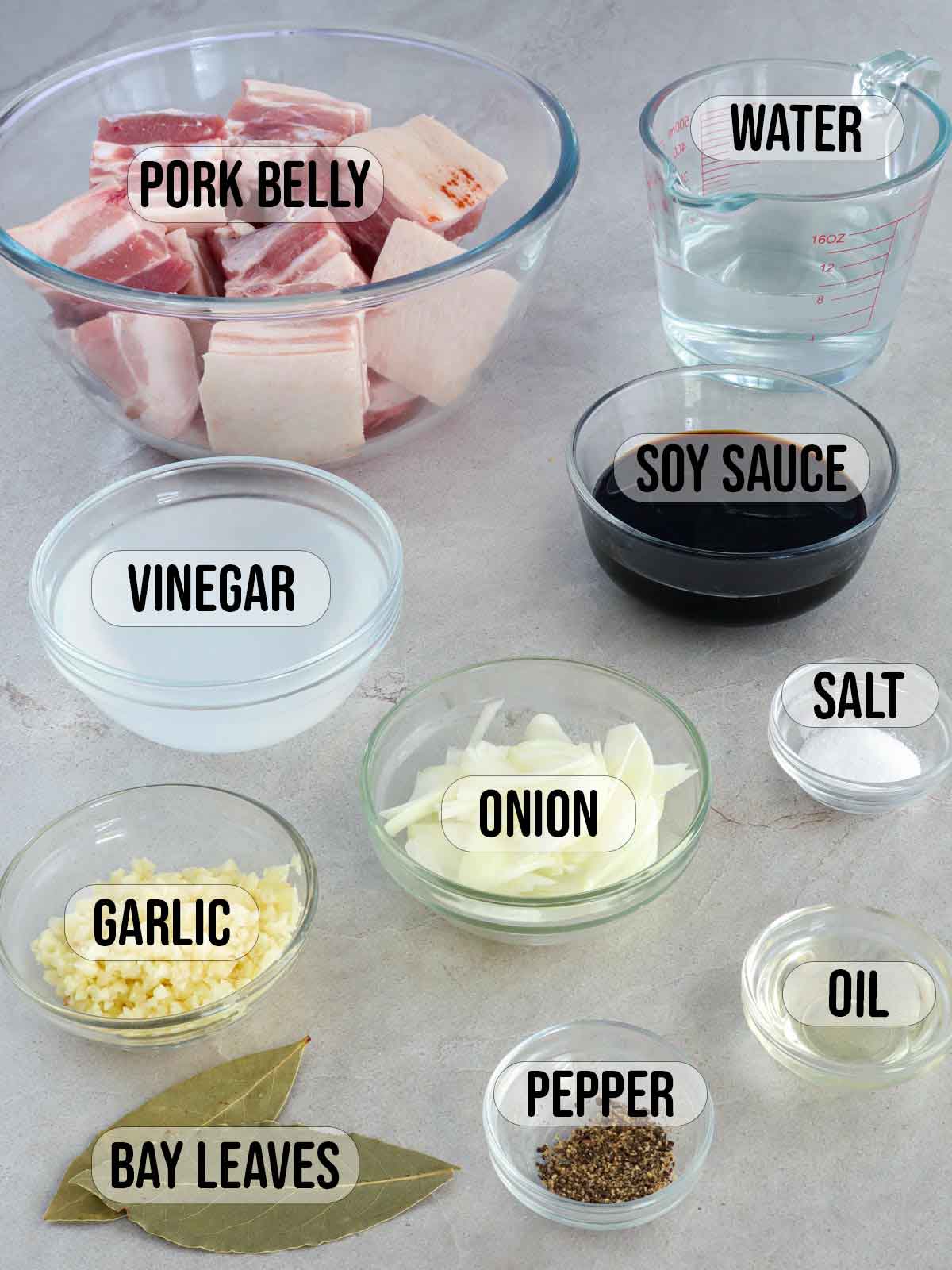
- Pork- I prefer to use pork belly in my adobo because I like its melt-in-your-mouth tenderness, but you can substitute pork shoulder, which, although a leaner cut, has enough ribbons of fat to bring equally delicious results. Other cuts, such as pork chops, legs, hocks, and ribs, are also good options for slow cooking.
- Oil- for sauteing and browning
- Sauce- a classic combination of tangy vinegar and savory soy sauce; water for tenderizing the meat.
- Aromatics- garlic, onion, bay leaves, and peppercorns enhance flavor.
- Seasonings- adjust taste with salt and pepper
Pork Adobo cooking steps
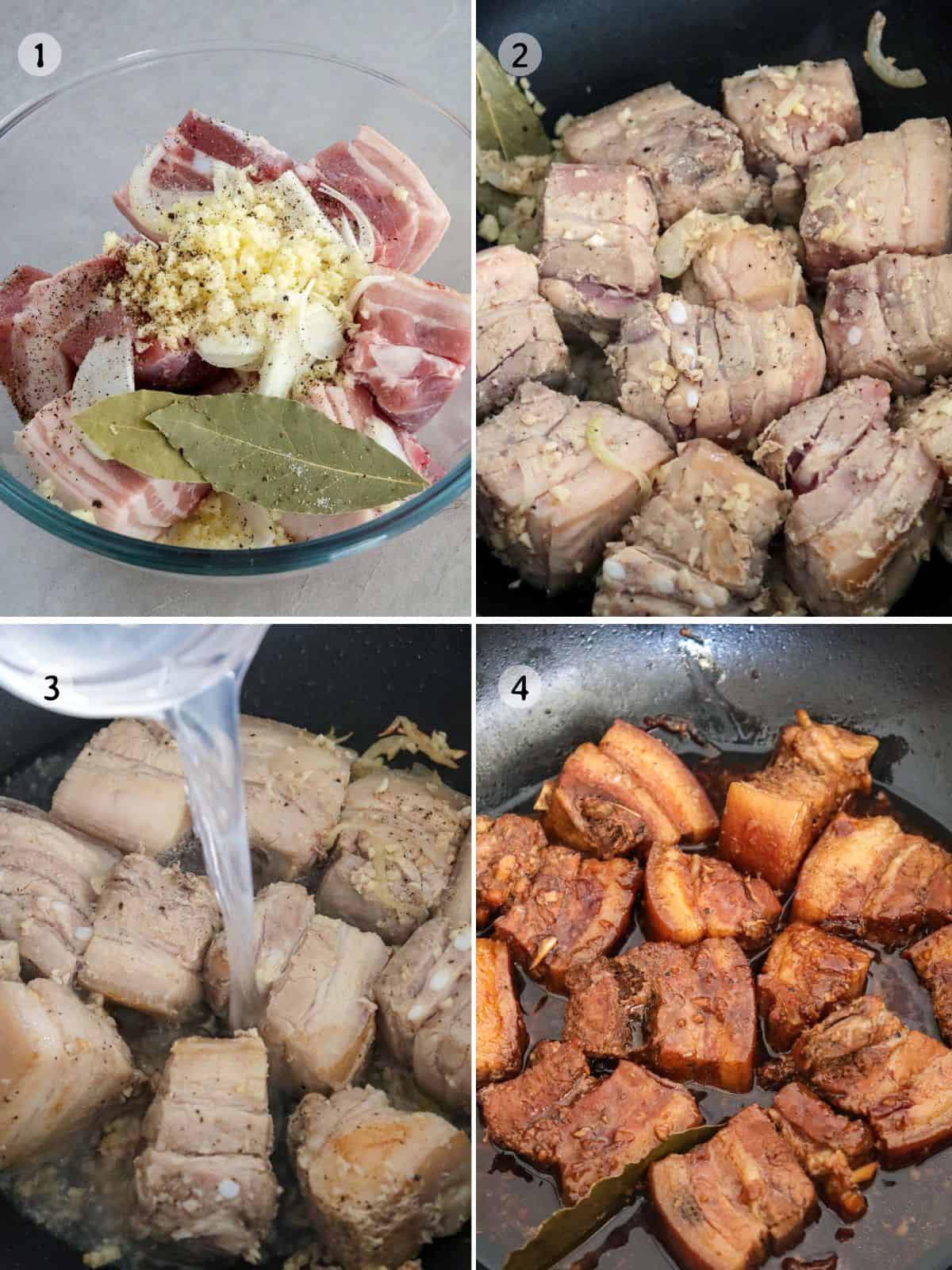
- Marinate- Cut the meat into uniform pieces to ensure even cooking. Combine with onions, garlic, bay leaves, salt, and pepper in a bowl. Marinate in the refrigerator for about 30 minutes.
- Brown the pork - Heat oil in a wide, heavy-bottomed skillet over medium heat. Add the meat mixture and cook, turning occasionally, until the pork is lightly browned. Do not overcrowd the pan when browning the pork so it gets a good sear and does not steam. Use a wide pan or cook in batches if necessary. Properly searing the meat before adding the braising liquid is an important step, as it gives the dish a delicious color and incredible depth of flavor.
- Add vinegar and allow it to boil, uncovered, without stirring to cook off the strong acid taste.
- Cook- Add soy sauce and water and stir to combine. Bring to a boil. Lower the heat, cover, and simmer until the meat is fork-tender and the sauce is reduced. Season with salt and pepper to taste.
Cooking tips
- Potatoes and hard-boiled eggs are a delicious way to extend servings. To help the potatoes from falling apart, pan-fry the cut potatoes first before adding them to the stew.
- If you want to season the dish with more salt than the recipe calls for, I suggest adding it during the last few minutes of cooking to gauge taste correctly. The flavor of the dish will concentrate as the sauce reduces.
Serving suggestions
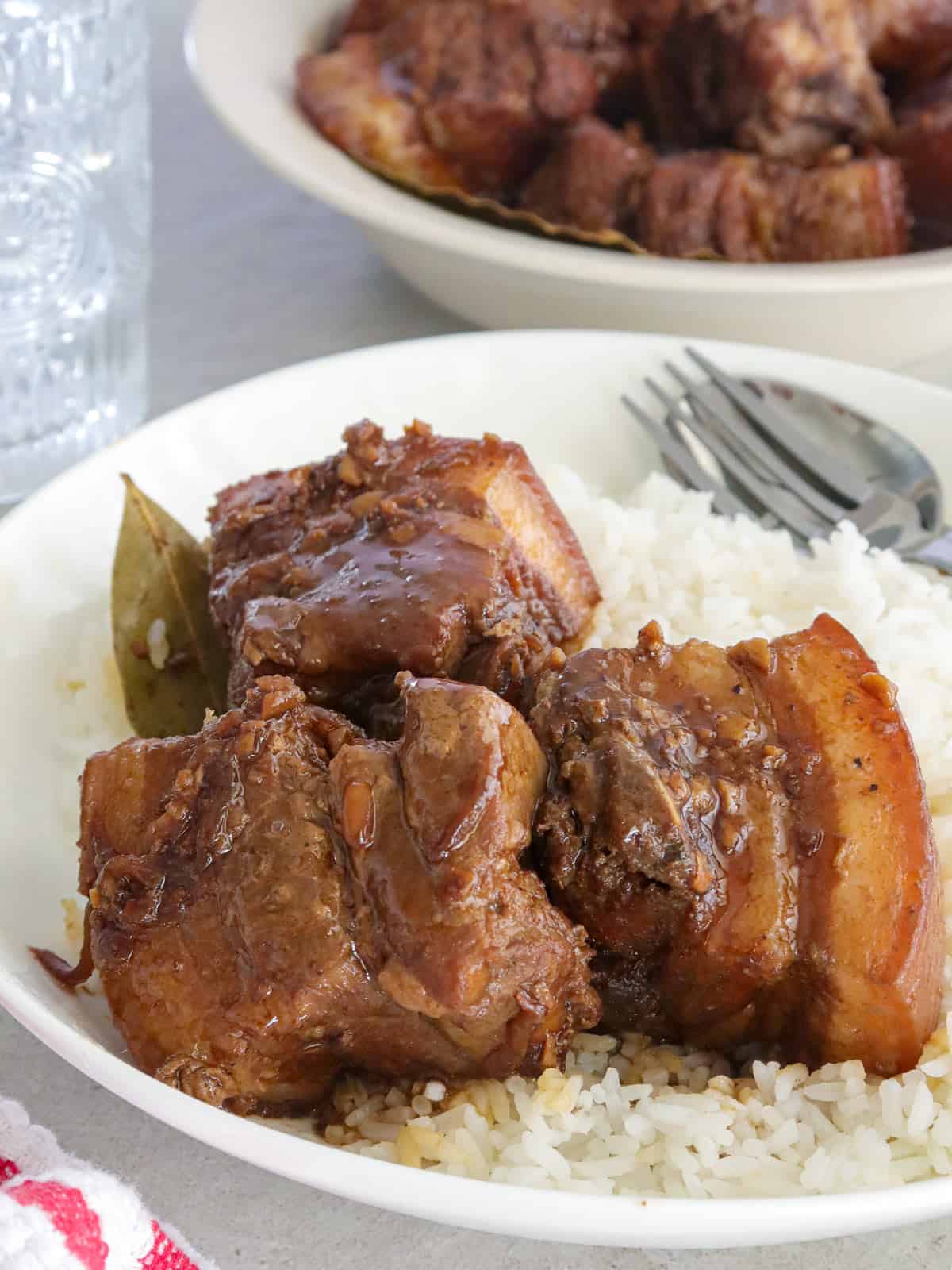
- Adobong baboy is best enjoyed with piping hot steamed rice for lunch or dinner. It's common to find it on breakfast menus, such as an adosilog meal (adobo, garlic fried rice, and fried egg).
- While it is mainly served as a viand, adobo meat is also used as a filling for bread, such as siopao or pandesal.
Storing leftovers
The adobo cooking process was initially a way to preserve food. Pre-colonial Filipinos prepared meat and seafood in vinegar and salt to prolong shelf life. It's a great make-ahead dish that tastes better after a day or two when the flavors have melded.
- Cool completely before transferring to a container with a tight-fitting lid. Refrigerate for up to 3 days or freeze for up to 2 months.
- Reheat in a wide pan over low heat to an internal temperature of 165 F or in the microwave at 2 to 3-minute intervals until completely heated.
- Leftovers can also be turned into delicious fried rice. Shred the cooked meat and toss with day-old steamed rice in a hot pan along with a few tablespoons of the sauce.
More pork recipes
Ingredients
- 2 pounds pork belly, cut into 2-inch cubes
- 1 onion, peeled and sliced thinly
- 1 head garlic, peeled and minced
- 2 bay leaves
- 1 teaspoon salt
- ½ teaspoon pepper
- 1 tablespoon oil
- 1 cup vinegar
- ½ cup soy sauce
- 1 cup water
Instructions
- In a bowl, combine pork, onions, garlic, bay leaves, salt, and pepper. Place in the refrigerator and marinate for about 30 minutes.
- In a wide, heavy-bottomed skillet over medium heat, heat oil. Add meat mixture and cook, turning occasionally, until pork is lightly browned.
- Add vinegar and allow to boil, uncovered and without stirring, for about 3 to 5 minutes.
- Add soy sauce and water and stir to combine. Allow to a boil for another 3 to 5 minutes.
- Lower heat, cover, and simmer for about 40 to 50 minutes or until meat is fork-tender and sauce is reduced.
- Season with salt and pepper to taste. Serve hot.
Notes
- Cook off the strong vinegar flavor by allowing it to boil uncovered and without stirring for a good few minutes before adding the soy sauce and water.
- If you want to season the dish with more salt than called for in the recipe, I suggest adding it during the last few minutes of cooking to correctly gauge taste. The flavor of the dish will concentrate as the sauce reduces.
Nutrition Information
“This website provides approximate nutrition information for convenience and as a courtesy only. Nutrition data is gathered primarily from the USDA Food Composition Database, whenever available, or otherwise other online calculators.”

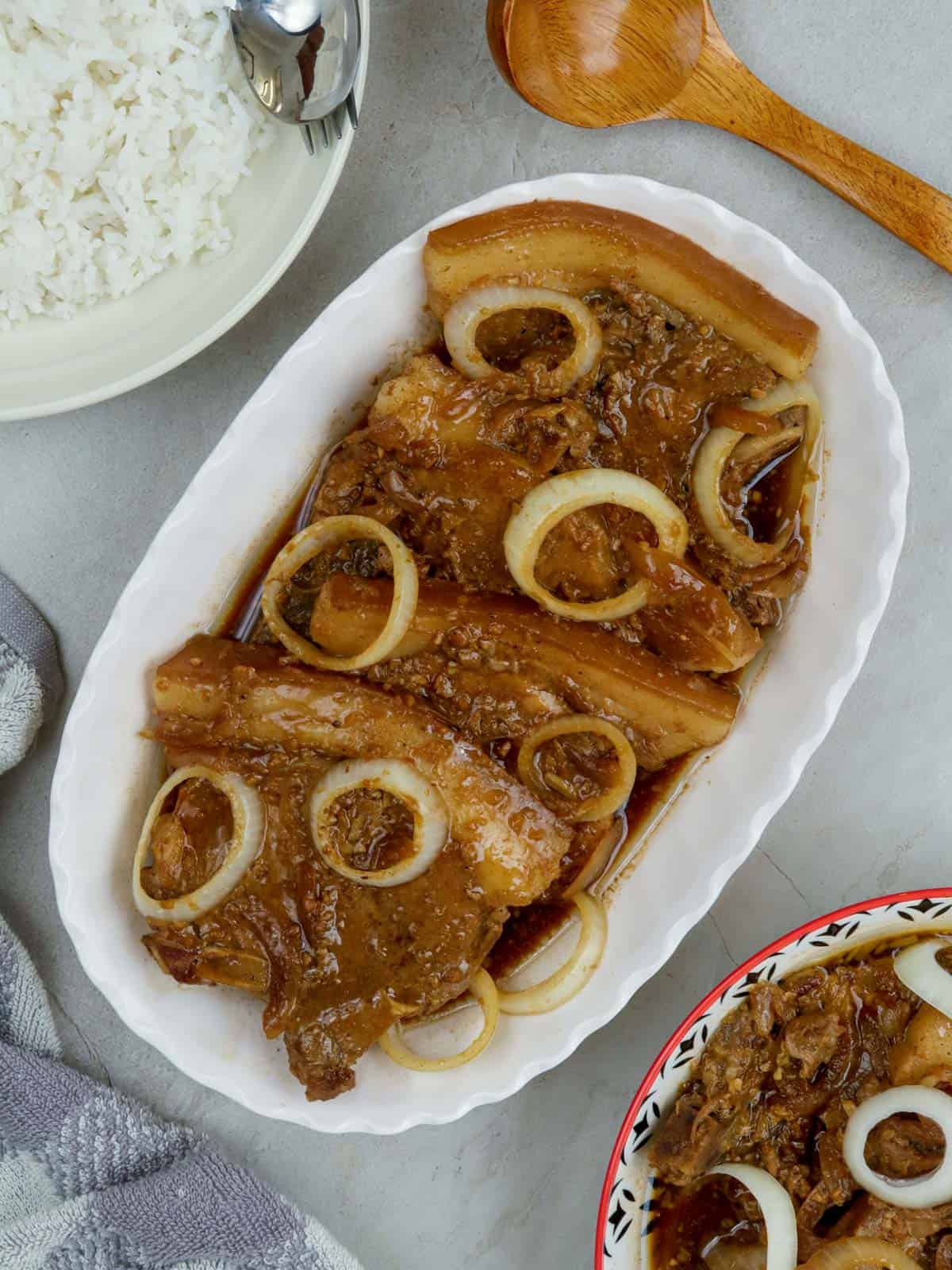
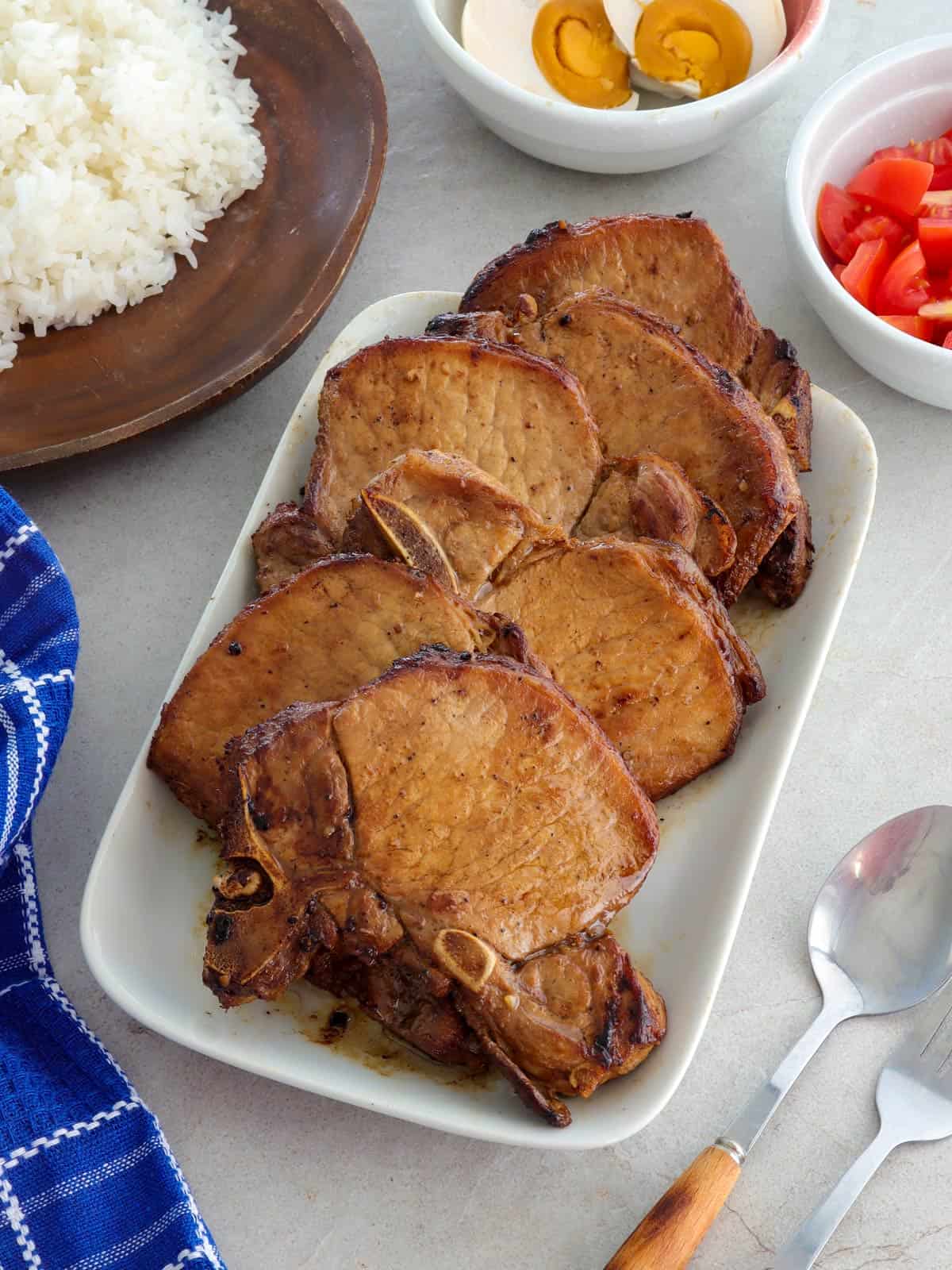


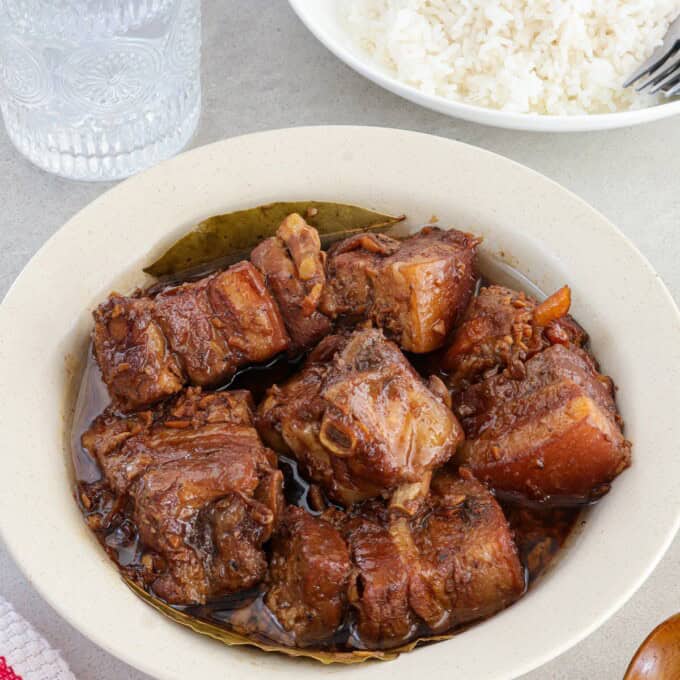

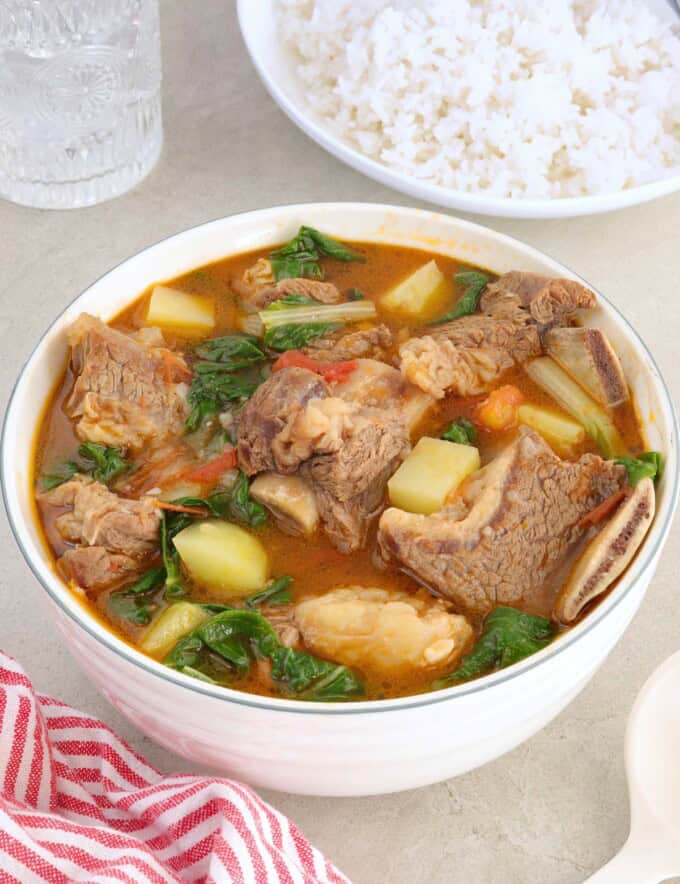
Jessica says
My go to pork adobo recipe
Mary says
What kind of vinegar do you use?
Robyn Harford says
Delicious recipe we have made over and over!
cher duncan says
I made this last night. i dont know what went wrong. i followed everything. pero yun suka super tapang. and kahit anong add ko ng water or salt, yun suka lang nalasahan ko. huhu
Lalaine Manalo says
When you add the vinegar to the meat, boil it uncovered and without stirring for a few minutes to cook off the strong acid taste. This will help mellow out the asim
Alpha says
So ono! Ang satrap!
Robert B says
Just like I had in When I was in the Military stationed in the Philippines!!!!
Reg B says
Thank you for your service!